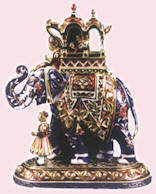Jaipur is a treasure trove for shoppers, shopping is irresistible, a wide range of Ethnic Bridal wear Sarees are available in the market, most of items are produced in the centers in and around jaipur city. The city is one of the most important centers in the world for cutting and polishing precious and semi precious stone, diamonds.
Although most tourists visit Jaipur to view its grand monuments, nonetheless there are as many who come to shop. And indeed a shopper’s paradise it is. The list of things available is endless, but the more popular items on the agenda of visitor to the city are jewellery, textiles and saris, good made of marble, wood, stone, lac, clay, metal and leather. The city ahs, for long, been a traditional centre of the finest of jewellery bedecked with both precious and semi precious stones, enamelling of gold in green, red and white, the favourite colours of the Mughals, which was introduced Raja Man Singh. The city is known the world over for diamond and emerald cutting.
Anyone searching for lac jewellery should visit maniharon Ka Rasta where lac jewellery is made and sold and Johari Bazaar where jewellery is crafted and sold. The variety is tremendous. Among the buys are table tops, mirror frames, betel nut boxes and sindoor holders. On the export list are statuettes, photo frames and pill boxes which are available in abundance on M.I. Road and the silver shops on the Badi Chaupar crossing. Two lanes joining the main road. Gopalji ka Rasta and Haldiyon ka Rasta have a number of shops selling jewellery and on the main road one can see silversmiths. It is closed forsome time on Sunday and Tuesday. The cutting, polishing and selling of precious and semi precious stones is centred around the Muslim dominated area of Pahar Ganj in the Surajpol Bazaar area. Silver jewellery is also made there. There are numerous factories and showrooms along the length of Amber Road between Zorawar Gate and Holiday Inn. Here one will find hand block prints, blue pottery, carpets and antiques.
Apart from jewellery, handicrafts like papier mache and carved furniture, are also extremely popular as also is the glazed blue pottery, an art that was imported from ground Persia. Blue pottery is made from ground quartz stone. On sale are suraghis, pots, ear-rings, soap dishes, door knobs, mugs and jugs. Brass is another important metal and statures of various sizes are available besides brass animals used by children as toys. Items made of white metal are also great buys as are the carvings in stone especially white marble used for making statues of gods and goddesses, animal and human figures. Carved marble bowls, vases and other decorative items also figure high on the list of the shopper.
For Wedding in Jaipur What and where to buy:
Bridal Saree zari,sattava at narain singh circle/nikhar fashion at saraogi mansion
Ramganj Bazar for shoes or jutis as they are called,
For Jewellery there are lots of jewellers in johari bazar and chora rasta.
Maniharon Ka Rasta (Tripolia Bazar) for lac bangles and other items,
Kishanpol Bazar for tie and dye textiles,
Achrol House, Subhash Chowk for carpets,
Sanganer village for block printing, hand-made paper and blue pottery.
Khajano Walano Ka Rasta for marble carving,
The local 'Kundan', style jewellery find a market throughout the world.The exotic blue pottery, the batik painting, block printed textiles of Sanganer and Bagru, tie & dye fabrics, Mojari- (the local shoe), sandal wood carving items, beautiful stone carvings etc. An entire street and several city sectors were earmarked for artisans and traders. The main markets are along Johari Bazar, Bapu Bazar, Nehru Bazar, Chaura Rasta, Tripolia Bazar and M.I. Road. Shops specialising in precious and semi-precious stones, ornaments and jewellery are to be found on and along Johari Bazaar.
Jaipur enjoys a high reputation for the manufacture of jewellery. It is one of the most active jewel markets of the world and is famous for precious and semi-precious stones and also for the cutting, polishing and setting of these stones, particularly that of diamonds, topaz and emeralds. Jaipur brass work is of immaculate quality. The Jaipur brass worker is successful in
infusing life like charm into the dull metal. Two kinds of work is done in Jaipur on brass viz., lacquered brass and carved brass. Jaipur enamel or Minakari, mostly done on gold and silver has always been a class of its own. The Jaipur artist is renowned not only for the purity of the colours, but also for its evenness.
Jaipur is also famous for its textiles. Sanganeri and Bagru block prints are the fashion designer’s craze these days. The Bandhej (tie and dye) print is very typical of the region.
Near the Hawa Mahal are large numbers of shops dealing in antiques and pseudo-antiques. Some shops opposite Hawa Mahal stock the famous Jaipuri quilts, weighing from a few hundred grams to a kilogram.
The stone and marble carving industry is also a famous art of Jaipur. The stone used is either procured from within Jaipur or from the marble mines of Makrana, the famous quarry that provided all the marble stone for one of the wonders of the world at Agra the Taj Mahal The carvings portraits and busts created in Jaipur are held in high esteem everywhere.
MI. Road : A broad thoroughfare houses a large number of emporia selling a variety of goods ranging from jewellery and brass work to textiles, to blue pottery, to woodwork, etc. These shops stock a large variety of goods to satisfy the tourists’ needs.
At Tripolia Bazar and Chaura Rasta: Here you can shop here for textiles, utensils, ironware and trinkets. If you want to see the artisans at work, step into the side lanes and see for yourself.
At Bapu Bazaar and Nehru Bazaar:You can purchase textiles, local perfumes and shoes made of camel skin.
At Johari Bazar: This is where you can buy jewellery and tie and dye sarees, two lanes joining the main road - Gopalji ka Rasta and Haldion ka Rasta house numerous establishments selling jewellery. On the main road itself you find many silversmiths. Traditional tie and dye fabrics and textiles are also available here.


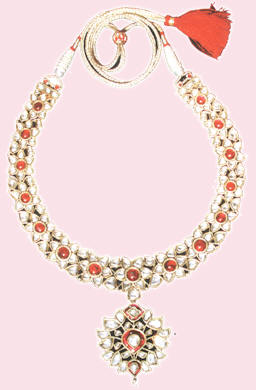 handicrafts are available in the market, most of items are produced in the centers in and around the city. The city is one of the most important centers in the world for cutting and polishing precious and semi precious stone, diamonds.
handicrafts are available in the market, most of items are produced in the centers in and around the city. The city is one of the most important centers in the world for cutting and polishing precious and semi precious stone, diamonds.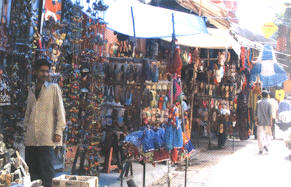 brass worker is successful in
brass worker is successful in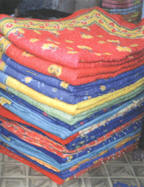
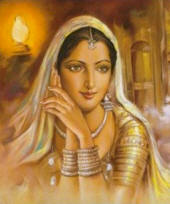 Johari
Johari